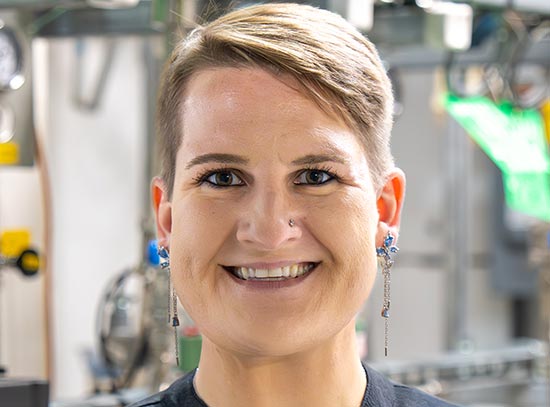National Lab Science Day
May 2, 2016
Brookhaven Lab was well represented at "National Lab Science Day" on Capitol Hill April 20, as leaders, scientists, and support staff from across the U.S. Department of Energy (DOE) complex showcased the national labs' exciting research, facilities, and capabilities for elected officials and staffers. Energy Secretary Ernest Moniz and Senators Dick Durbin and James Risch, who served as co-sponsors of the event, welcomed Congressional colleagues and staffers, inviting them to visit exhibits in five theme areas: energy, environment, computation, facilities, and the universe. The displays represented the entire DOE complex, with an emphasis on "discovery" science as well as applications derived from research at the national laboratories' light sources, nanocenters, and through large-scale international collaborations in nuclear and particle physics.
“Brookhaven's participation in this event took an enormous amount of behind-the-scenes planning and coordination, both at the Lab and with many others around the DOE complex,” said Brookhaven Lab Director Doon Gibbs. “It was very exciting to see these efforts come to fruition with such dynamic displays and engaging interactions among Lab staff, DOE leaders, elected officials, and their staffers.”
Elected officials who attended this National Lab Day included Senators Risch (ID) and Durbin (IL) along with Senator Mark Warner (VA), Senator Maria Cantwell (WA), Representative Randy Hultgren (IL), Representative Chuck Fleischmann (TN), Representative Bill Foster (IL), and Representative Dan Newhouse (WA), plus staffers from many other offices.
Earlier in the day, Gibbs joined one of several groups of lab directors who visited elected officials and their staffers on Capitol Hill to talk about the importance of the national laboratory system. Gibbs—along with Oak Ridge National Lab Director Thom Mason and Jefferson Lab Director Hugh Montgomery—met with Senator Ed Markey (MA) and staffers from Senator Elizabeth Warren's (MA) office, Representatives Michael Capuano (MA) and Joe Kennedy (MA), and a staffer in Representative Tom Reed's (NY) office to share information about their respective laboratories’ progress, vision, and impact on behalf of the nation in DOE's mission areas.
"Displays represented the entire DOE complex, with an emphasis on "discovery” science..."
Research at the Relativistic Heavy Ion Collider (RHIC) had an especially prominent presence among the National Lab Day displays. In the "universe" theme area, RHIC physicist Paul Sorensen described the goals and benefits of nuclear physics, drawing listeners in with an interactive RHIC collision simulation and display of live collision particle tracks while a video animation of RHIC's "perfect" liquid played on a nearby table-size touchscreen (PHENIX also has a similar live event display). In "facilities," accelerator physicist Stephen Brooks showed off a series of visualizations, including similar collision simulations, for visitors wearing 3-D glasses, who grabbed at particles "popping" off the screen and glided through an accelerator flyover and stereoscopic photos of the RHIC tunnel and STAR and PHENIX detectors.
The "computation" theme area included physicist Bjoern Schenke's visualization of quark-gluon plasma hydrodynamics, a graphic of how Brookhaven shares data from RHIC and the Large Hadron Collider's ATLAS detector with collaborators around the world using DOE's Energy Sciences Network, and a model of a sensor array being designed by Brookhaven's Instrumentation Division for the world's largest (data-intensive) digital camera at the heart of the Large Synoptic Survey Telescope.
As part of an exhibit displaying the capabilities of the all the national labs and how they work together as a system, Susan Pepper, Chair of the Nonproliferation & National Security Department, gave a presentation conveying the impact that technology transfer from the national laboratories has had on the U.S. economy.
Altogether, the displays illustrated the power and reach of the Office of Science and DOE as a whole.
In addition to the exhibit presenters named above, many BNLers played a role in making the event a success: RHIC physicists Jerome Lauret and Dmitry Arkhipkin developed and tweaked the live collision event display; members of the Collider-Accelerator Department adjusted the RHIC maintenance schedule so the display could feature live events; Instrumentation postdoc Rebecca Coles transported the LSST demo to D.C.; and Pete Genzer and Karen McNulty Walsh of the Media & Communications Office helped plan the demos and exhibits in partnership with Deputy Director for Science & Technology Bob Tribble, and Karen provided on-site setup and support.
You can find additional pictures from the event here.
Brookhaven National Laboratory is supported by the Office of Science of the U.S. Department of Energy. The Office of Science is the single largest supporter of basic research in the physical sciences in the United States, and is working to address some of the most pressing challenges of our time. For more information, please visit science.energy.gov.
2016-6331 | INT/EXT | Newsroom









